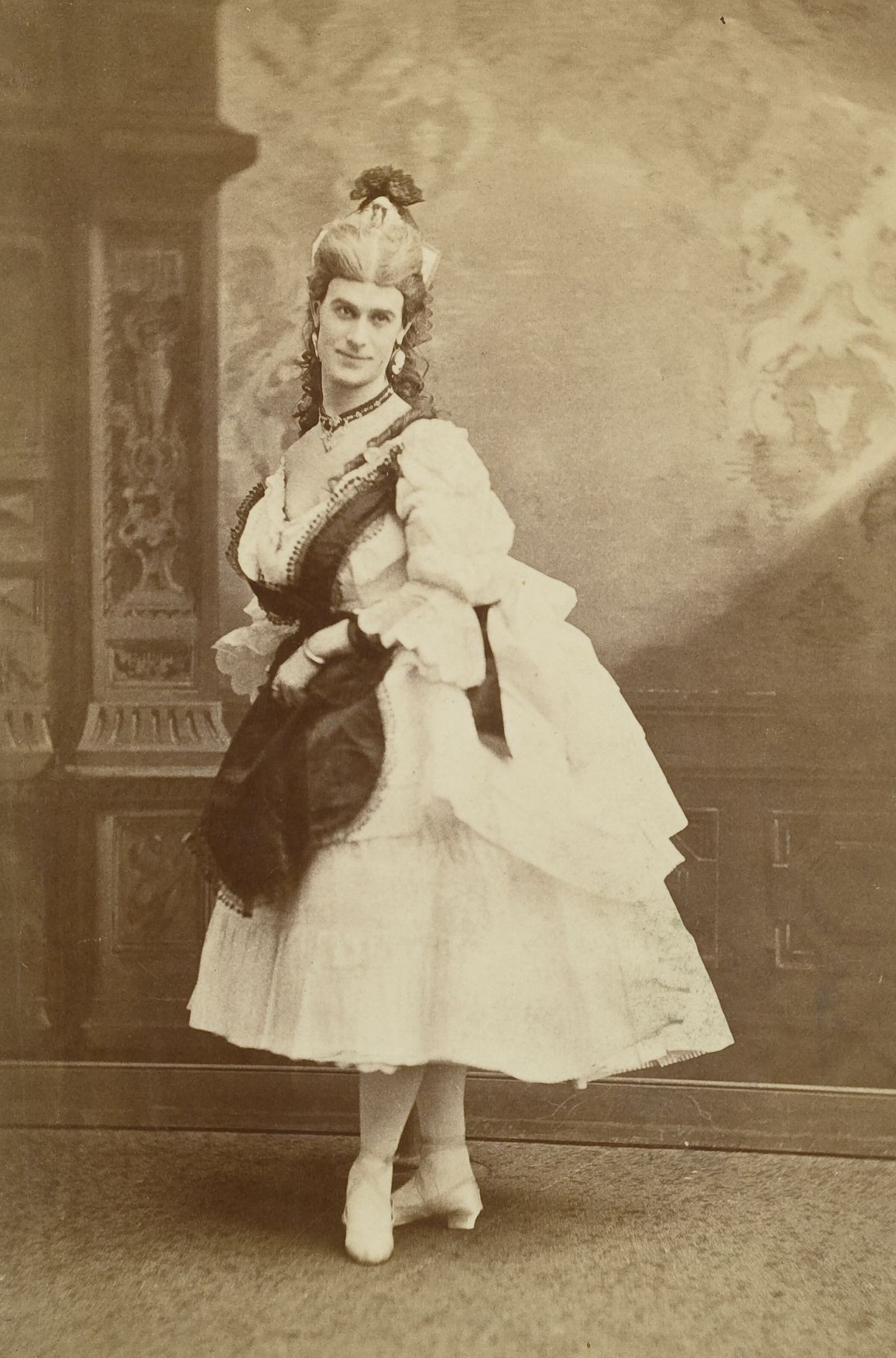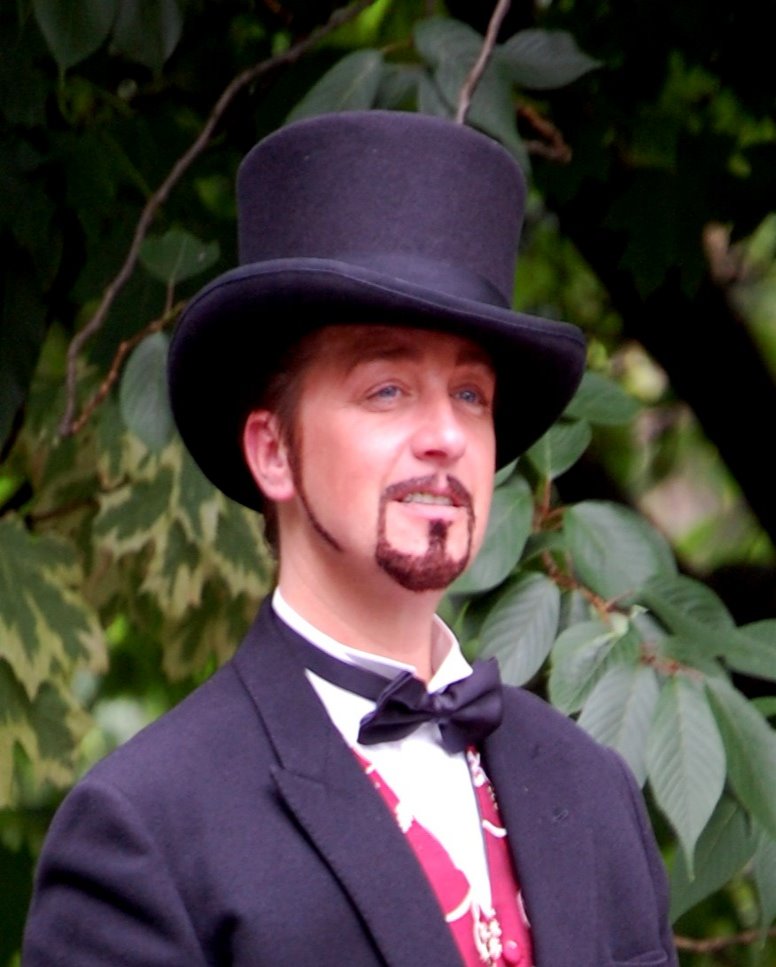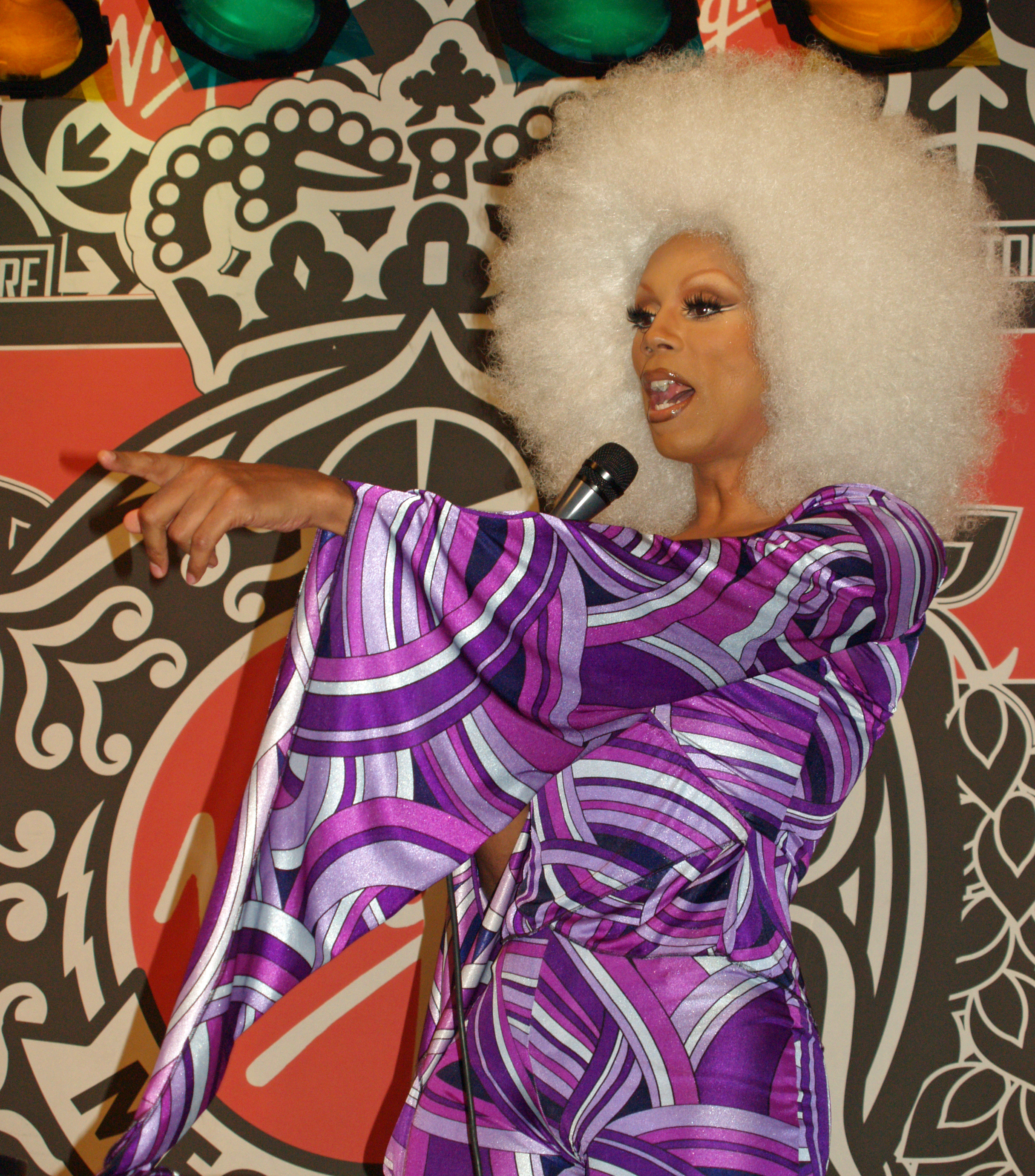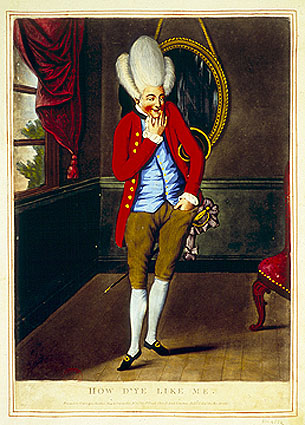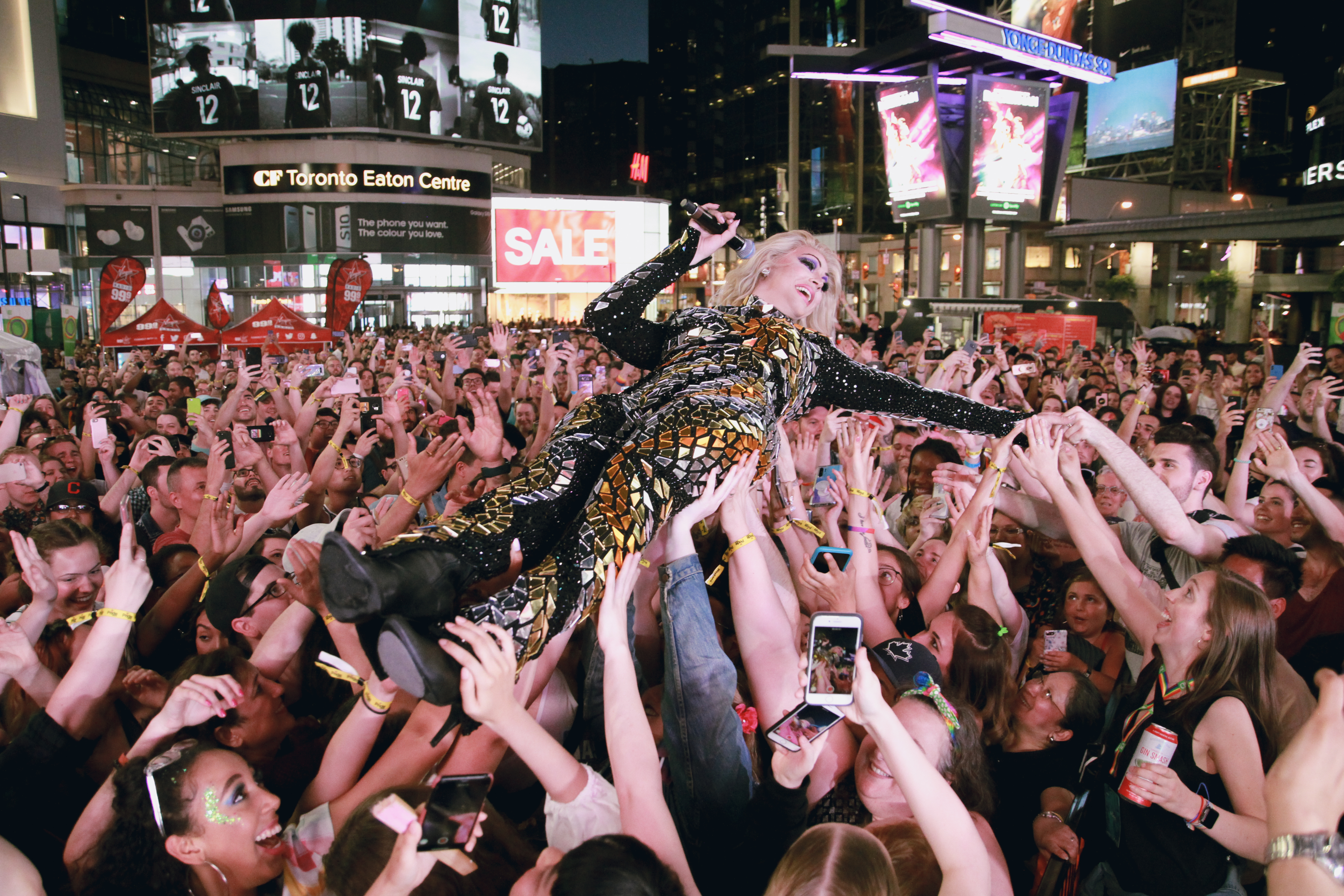|
Drag Pageant
Drag pageantry is a form of Beauty pageant, pageantry for female impersonators, drag queens, and trans woman, trans women, styled after traditional beauty pageants or contests for cisgender women. It has also evolved into a pageantry for drag king, male impersonators, drag kings and trans men. National pageants in the United States National drag pageants became enmeshed within the gay community during the 1960s with a national circuit of pageants organized by Flawless Sabrina and have become increasingly prevalent since. Drag pageants were held in individual gay bars, and discothèques during the post Stonewall riots, Stonewall era. Drag pageants evolved independently, in the decade subsequent to the first gay Mardi Gras coronations. Miss Gay America Mirroring the format of the Miss America contest, the first national gay pageant Miss Gay America (MGA) was held in 1972 at the Watch Your Hat & Coat Saloon in Nashville, Tennessee, Nashville's first gay dance and show bar ... [...More Info...] [...Related Items...] OR: [Wikipedia] [Google] [Baidu] |
Beauty Pageant
A beauty pageant is a competition in which the contestants are judged and ranked based on various physical and mental attributes. Per its name, beauty pageants traditionally focus on judging the contestants' physical attractiveness, sometimes solely so, but most modern beauty pageants have since expanded to also judge contestants based on "inner beauty"—their individual traits and characteristics, including personality, Human intelligence, intelligence, aptitude, moral character, and Charity (practice), charity. Though typically perceived as a female-oriented competition, male beauty pageants also exist, as do child beauty pageants for youth. The term beauty pageant refers originally to the Big Four beauty pageants: Miss Universe, Miss World, Miss International, and Miss Earth. Hundreds and thousands of beauty contests are held annually, but the Big Four are considered the most prestigious, and are widely covered and broadcast by news media. The earliest formal beauty pageants w ... [...More Info...] [...Related Items...] OR: [Wikipedia] [Google] [Baidu] |
Transgender
A transgender (often shortened to trans) person has a gender identity different from that typically associated with the sex they were sex assignment, assigned at birth. The opposite of ''transgender'' is ''cisgender'', which describes persons whose gender identity matches their assigned sex. Often, transgender people desire medical assistance to Gender transition, medically transition from one sex to another; those who do may identify as transsexual.. "The term ''transsexual'' was introduced by Cauldwell (1949) and popularized by Harry Benjamin (1966) [...]. The term ''transgender'' was coined by John Oliven (1965) and popularized by various transgender people who pioneered the concept and practice of transgenderism. It is sometimes said that Virginia Prince (1976) popularized the term, but history shows that many transgender people advocated the use of this term much more than Prince." Referencing .. "The use of terminology by transsexual individuals to self-identify varies ... [...More Info...] [...Related Items...] OR: [Wikipedia] [Google] [Baidu] |
RuPaul's Drag Race
''RuPaul's Drag Race'' is an American reality competition television series, the first in the Drag Race (franchise), ''Drag Race'' franchise, produced by World of Wonder (company), World of Wonder for Logo TV (season 1–8), WOW Presents Plus, VH1 (season 9–14) and, beginning with the fifteenth season, MTV. The show documents RuPaul in the search for "America's next drag queen, drag superstar". RuPaul plays the role of host, mentor, and head judge for this series, as contestants are given different challenges each week. Contestants are judged by a panel that includes RuPaul, Michelle Visage, one of four rotating judges (Carson Kressley, Ross Mathews, Ts Madison, or Law Roach), as well as one or more guest judges, who critique their progress throughout the competition. The title of the show is a play on drag queen and drag racing, and the title sequence and song "Drag Race" both have a drag-racing theme. ''RuPaul's Drag Race'' has aired for seventeen seasons and inspired the ... [...More Info...] [...Related Items...] OR: [Wikipedia] [Google] [Baidu] |
List Of Drag Queens
This is a list of drag queens, sometimes known as female impersonators, drag performers, or drag artists. Performers See also * List of RuPaul's Drag Race contestants, List of ''RuPaul's Drag Race'' contestants * List of exóticos, List of ''exóticos'' References External links List of Drag Queens/Drag Performers at draglistings.com {{DEFAULTSORT:Drag queens Drag queens, * Drag (entertainment)-related lists Lists of cross-dressers, queens ... [...More Info...] [...Related Items...] OR: [Wikipedia] [Google] [Baidu] |
List Of Transgender-related Topics
The following outline is provided as an overview of and topical guide to transgender topics. The term "transgender" is multi-faceted and complex, especially where consensual and precise definitions have not yet been reached. While often the best way to find out how people identify themselves is to ask them, not all persons who might be thought of as falling under the transgender 'umbrella' identify as such. ''Transgender'' can also be distinguished from ''intersex'', a term for people born with physical sex characteristics "that do not fit typical binary notions of male or female bodies". Books and articles written about transgender people or culture are often outdated by the time they are published, if not already outdated at the time of composition, due to inappropriate and/or outdated questions or premises. Psychology, medicine, and social sciences research, aid, or otherwise interact with or study transgender people. Each field starts from a different point of view, offers ... [...More Info...] [...Related Items...] OR: [Wikipedia] [Google] [Baidu] |
Faux Queen
An AFAB queen, diva queen, hyper queen, or bio queen, is a drag queen who is a woman, or a non-binary person who was Sex assignment, assigned female at birth. These performers are generally indistinguishable from the more common male or transgender female drag queens in artistic style and techniques. Terminology "AFAB" stands for "assigned female at birth". While this is somewhat controversial, other terms still used both by performers and in the media are also considered offensive. The term "faux queen" is rejected and considered outdated by many drag artists for implying that female drag queens are not as "real" as male drag queens, and the term "female queen" is considered by many performers to be Transphobia, transphobic as they imply that a Trans woman, transgender woman who performs as a drag queen is not female. Other descriptions include "biologically challenged" drag queen, "female female impersonator", or "female impersonator impersonator." In recent years "AFAB quee ... [...More Info...] [...Related Items...] OR: [Wikipedia] [Google] [Baidu] |
Drag Kings
Drag kings have historically been mostly female performance artists who dress in masculinity, masculine Drag (clothing), drag and personify male gender stereotypes as part of an individual or group routine. As documented in the 2003 ''Journal of Homosexuality,'' in more recent years the world of drag kings has broadened to include performers of all gender expressions. A typical drag show may incorporate dancing, acting, stand-up comedy and singing, either live or Lip sync, lip-synching to pre-recorded tracks. Drag kings often perform as exaggeratedly Machismo, macho male characters, portray characters such as construction workers and rappers, or impersonate male celebrities like Elvis Presley, Michael Jackson and Tim McGraw. Drag kings may also perform as personas that do not clearly align with the gender binary. Drag personas that combine both stereotypically masculine and feminine traits are common in modern drag king shows. In the late 1800s and early 1900s, several drag king ... [...More Info...] [...Related Items...] OR: [Wikipedia] [Google] [Baidu] |
Drag Queens
A drag queen is a person, usually male, who uses drag clothing and makeup to imitate and often exaggerate female gender signifiers and gender roles for entertainment purposes. Historically, drag queens have usually been gay men, and have been a part of gay culture. People do drag for reasons ranging from self-expression to mainstream performance. Drag shows frequently include lip-syncing, live singing, and dancing. They typically occur at LGBTQ pride parades, drag pageants, cabarets, carnivals, and nightclubs. Drag queens vary by type, culture, and dedication, from professionals who star in films and spend a lot of their time in their drag personas, to people who do drag only occasionally. Women who dress as men and entertain by imitating them are called drag kings. Those who do occasional drag may be from other backgrounds than the LGBT community. There is a long history of folkloric and theatrical crossdressing that involves people of all orientations. Not everyon ... [...More Info...] [...Related Items...] OR: [Wikipedia] [Google] [Baidu] |
Drag (clothing)
Drag is a performance of exaggerated femininity, masculinity, or other forms of gender expression, usually for entertainment purposes. Drag usually involves cross-dressing. A drag queen is someone (usually male) who performs femininely and a drag king is someone (usually female) who performs masculinely. Performances often involve comedy, social satire, and at times political commentary. The term may be used as a noun as in the expression ''in drag'' or as an adjective as in ''drag show''. __TOC__ Etymology The origin of the term ''drag'' is uncertain; it may date as far back as the Elizabethan era in England, where it was used to describe male actors playing female roles in theaters where cross-dressing was the norm. The first recorded use of ''drag'' in reference to actors dressed in women's clothing is from 1870. One suggested etymological root is 19th-century theater slang, from the sensation of long skirts trailing on the floor. Another possible origin is the Yiddish term m ... [...More Info...] [...Related Items...] OR: [Wikipedia] [Google] [Baidu] |
Cross-dressing Ball
Gay balls, cross-dressing balls, pansy balls, or drag balls were (depending on the place, time, and type) public or private balls that were celebrated mainly in the first third of the 20th century, where cross-dressing and ballroom dancing with same-sex partners was allowed. By the 1900s, the balls had become important cultural events for gays and lesbians, even attracting tourists. Their Golden Age was during the interwar period, mainly in Berlin and Paris, even though they could be found in many big cities in Europe and the Americas, such as Mexico City and New York City. Precedents By the end of the 17th century, a gay subculture is documented in Europe, with cruising areas, bars, parties and balls, cross-dressers, and slang. Scholars like Randolph Trumbach consider it is the moment when gay subculture appears in Europe. On the contrary, historian Rictor Norton considers unlikely that such a subculture would appear fully formed, and thinks that it was actually the incre ... [...More Info...] [...Related Items...] OR: [Wikipedia] [Google] [Baidu] |
Ball Culture
The Ballroom scene (also known as the Ballroom community, Ballroom culture, or just Ballroom) is an African-American and Latino underground LGBTQ+ subculture. The scene traces its origins to the drag balls of the mid-19th century United States, such as those hosted by William Dorsey Swann, a formerly enslaved Black man in Washington D.C.. By the early 20th century, integrated drag balls were popular in cities such as New York, Chicago, New Orleans, Baltimore, and Philadelphia. In the mid-20th century, as a response to racism in integrated drag spaces, the balls evolved into house ballroom, where Black and Latino attendees could "walk" in a variety of categories for trophies and cash prizes. Most participants in ballroom belong to groups known as "houses", where chosen families of friends form relationships and communities separate from their families of origin, from which they may be estranged. The influence of ballroom culture can be seen in dance, language, music, and p ... [...More Info...] [...Related Items...] OR: [Wikipedia] [Google] [Baidu] |
Brooke Lynn Hytes
Brooke Lynn Hytes is the stage name of Brock Edward Hayhoe (born March 10, 1986), a Canadian-American drag queen, ballet dancer, and television personality. After working as a dancer with Cape Town City Ballet and Les Ballets Trockadero de Monte Carlo, Brooke Lynn Hytes achieved international recognition for competing on the RuPaul's Drag Race (season 11), eleventh season of ''RuPaul's Drag Race''; Brooke Lynn Hytes placed second, only to winner Yvie Oddly. Brooke Lynn Hytes is the first Canadian to compete in the series. Since 2020, Brooke Lynn Hytes has been a main judge on the spin-off series ''Canada's Drag Race'', and is the first ''Drag Race'' contestant to become a full-time judge in Drag Race (franchise), the franchise. Early life Hayhoe was born on March 10, 1986, in Toronto. He attended high school at Etobicoke School of the Arts. When he was 15, he was accepted into the Canada's National Ballet School, National Ballet School of Canada, where he trained for five year ... [...More Info...] [...Related Items...] OR: [Wikipedia] [Google] [Baidu] |


